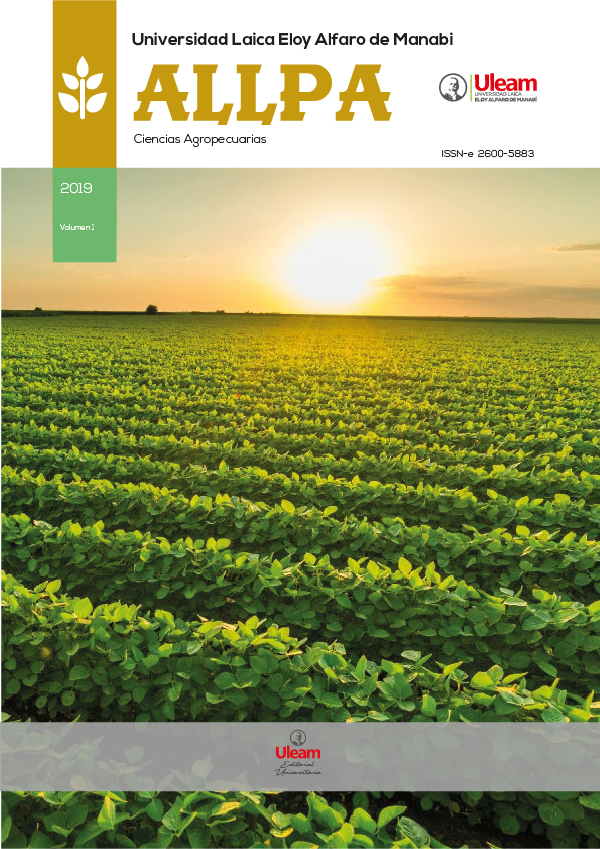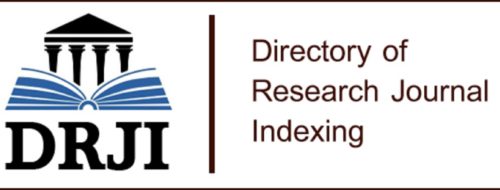Use of coffee bagasse (robusta) for paper production
DOI:
https://doi.org/10.56124/allpa.v8i16.0116Keywords:
By-product, revaluation, concentration, coffee bagasseAbstract
Coffee is one of the world's most valuable commodities. Its manufacturing process generates waste that could be transformed into a product. The purpose of this study was to obtain a paper with characteristics similar to commercial paper. To this end, the use of sodium hydroxide at three concentrations (13, 15, and 17%) and the type of starch used in the sizing phase (cassava starch and corn starch) were studied on the paper's physical and mechanical characteristics. The paper with the best characteristics was obtained with cassava starch as a sizing additive. Regarding thickness, treatments T2, T3, T5, T6, T8, and T9 ranged in thickness from 0.76 to 0.83 mm, complying with TAPPI Standard T 410. In the case of ash analysis, treatment T4 showed the lowest ash content (4.12%). The weight treatments exceeded the requirements of TAPPI T410 (70-119 g/m2), but are nevertheless suitable for paperboard and cardboard. The evaluation of the whiteness index showed that the concentration of NaOH influences its hue. It is concluded that coffee grounds are an alternative for papermaking, and it is suggested that this line of research be continued using other starch sources, concentrations, and coffee varieties.
Keywords: By-product, revaluation, concentration, coffee bagasse.
Downloads
References
Acosta, R. (2012). Utilización de Residuos de Café Tostado y Molido como Bioadsorbente para la Remoción de Arsénico ( V ) en Agua Resumen Wasted Roast and Ground Coffee as Bioadsorbent to Removal Arsenic ( V ) in Water Abstract. Quimica central, 2(1), 49–59.
Aguilar-Rivera, Houbron, E., Rustrian, E., & Reyes-Alvarado. (2014). Papel amate de pulpa de café (Coffea arabica) Residuos de beneficios humedos. Ra Ximhai, 10(3), 103–117.
Alvarado, L., Cevallos, P., Alcívar, B., Dueñas, V., & Antonieta, R. (2021). Residuos del banano (Musa paradisiaca) como materia prima alternativa en la elaboración de papel. Colón Ciencias Tecnologia y Negocios, 8(1), 35–46. https://doi.org/DOI:10.48204/j.colonciencias.v8n1a3
Arafat, K., Nayyen, J., Quadery, A., Quaiyyum, M., & Sarwar Jahan, M. (2018). Handmade paper from waste banana fibre. Bangladesh Journal of Scientific and Industrial Research, 55 (2)(2), 83–88. https://doi.org/https://doi.org/https://doi.org/10.3329/bjsir.v53i2.36668
Borunda Baquera, P., Hernández Quintero, A., & Marcela Ramírez López, E. (2021). Residuo de café transformado en bioplástico. Ciencia transdisciplinar para el desarrollo y la supervivencia de la humanidad , 59–72.
Burgos Arcos, C., & Sablón Cossio, N. (2022). Evaluation of alternatives for the use of coffee lignocellulosic biomass in Chimborazo. Ingeniería Industrial, XLIII(4), 1–16. https://doi.org/https://orcid.org/0000-0001-7925-7746
Coles, R., McDowell, D., & MJ, K. (2003). Food Packaging Technology , in Technology & Engineering. CRC Press, 241–281.
De Paula, I., Ceballos Guerta, A., & Miliani Martinez, R. (2019). Comparison of Eucalypt, Pine, and sugarcane cellulose fibers used for paper production. Árvore, 43(3), 1–7. https://doi.org/https://doi.org/http://dx.doi.org/10.1590/1806-90882019000400011
Egamberdiev, E., Akmalova, G., & Rahmonberdiev, G. (2023). Obtaining paper products from cellulose-containing plants and researching its field of application (en línea). IOP Conference Series. Earth and Environmental Science, 1142((1):12054.).
Garcìa Berfòn, L., Armijos Riofrio, C., Aguilar Ramirez, S., Lòpez Cordova, C., Ramírez-Roble, J., Ramírez-Roble, L., & Pogo-Tacuri, E. (2021). Non-woody species study from Loja Province (Ecuador) as potential raw materials for handmade paper manufacture. Ingeniería, investigación y tecnología, 22(2), 1–13. https://doi.org/https://doi.org/https://doi.org/10.22201/fi.25940732e.2021.22.2.011
García M, A. F., & Riaño L., C. . (1999). Extracción de celulosa a partir de la borra de café. Cenicafé, 50(3), 205–214.
González, V. K., & Valencia, I. (2015). Memorias del V Congreso Latinoamericano de Agroecología - SOCLA. En Abbona Esteban (Ed.), Facultad de Ciencias Agrarias y Forestales (UNLP) (Sarandón, S, Vol. 1). Santiago, J.
Guo, J., Kong, L., Du, B., & & Xu, B. (2019). Morphological and physicochemical characterization of starches isolated from chestnuts cultivated in different regions of China. International journal of biological macromolecule, 130, 357–368.
Hasan, A., Salleh, S., & Hafferi, N. (2016). The effects of sodium hydroxide content on mechanical and physical properties of rice straw paper. ARPN Journal of Engineering and Applied Sciences, 4(6), 2–8.
Hoseini, M., Cocco, S., Casucci, C., Cardelli, V., & Corti, G. (2021). Coffee by-products derived resources A review (en línea). Biomass and Bioenergy 148:106009.
Hubbe, M. A. (2007). Paper´s resistance to wetting-A review of internal sizing chemic and their effects. BioResources, 1, 106–145.
Jaramillo Valle, F., Corral Ruiz, A., Fois Lugo, M., & Reyes Pincay, B. (2017). Elaboración de papel vegetal que cumpla las normas TAPPI para el diseño e impresión a partir de la fibra de la cascara del plátano verde. Polo del Conocimiento, 2(6), 499–515. https://doi.org/https://doi.org/10.23857/pc.v2i6.145
Linare-Catañeda, A., Corzo-Ríos, L., Bautista-Ramírez, E., & Gómez, Y. (2021). Elaboración de un envase primario para alimentos a partir de residuos de maíz y piñón mexicano. Revista Especializada en Ciencias Químico-Biológicas, 24(1), 1–15.
Lozano, F. J., & Lozano, R. (2018). Assessing the potential sustainability benefits of agricultural residues: Biomass conversion to syngas for energy generation or to chemicals production. Journal of Cleaner Production, 172, 4162–4169. https://doi.org/https://doi.org/10.1016/j.jclepro.2017.01.037
Moreno, R., & Garcia, S. (2018). Determinación de la concentración optima de hidróxido de sodio para la obtención de papel y sus propiedades fisicomecanicas, a partir del raquis del racimo de plátano (Mussa paradisiaca). Investigación Universitaria UNU, 8(2), 1–10.
Nitthinkan, N., Leelapornpisid, P., Natakankitkul, S., Chaiyana, W., Mueller, M., Viernstein, H., & Kiattisin, K. (2018). Improvement of Stability and Transdermal Delivery of Bioactive Compounds in Green Robusta Coffee Beans Extract Loaded Nanostructured Lipid Carriers. Journal of Nanotechnology, 2018(1), 1–12.
Rhin, J. (2010). Effect of moisture content on tensile properties of paper-based food packaging materials. Food Sci Biotechnol, 19(4), 243–247. https://doi.org/https://doi.org/https://doi.org/10.1007/s10068-010-0034-x
Roberts, J. (1996). The chemistry of paper. Cambridge: Royal Society of Chemistry. Royal Society of Chemistry. https://books.google.com.ec/books?id=JhGNFFAlZtYC&printsec=frontcover&hl=es&source=gbs_ge_summary_r&cad=0#v=onepage&q&f=false
Rozo, G., González, L., & Villamizar, L. (2016). Elaboracion de un papel a base de cogollos de piña. Revista Nova (Colombia). file:///C:/Users/PC/Downloads/hcoronado,+Articulo+6 (2).pdf
Urrego Yepes, W., & Godoy Pernal, M. (2021). Revisión Aprovechamiento de los residuos de la agroindustria del café en la elaboración de materiales compuestos de matriz polimérica. Dialnet, 19(2), 2216–1368.
Vargas, Y., & Pérez, L. (2018). Aprovechamiento De Residuos Agroindustriales En El Mejoramiento De La Calidad Del Ambiente. Revista facultad de ciecias básicas, 14(1), 59–72.
Vianney, A., Lubgama, M., Opio, J., Mennya, E., Nono, D., & Nalubega, H. (2023). Production and Characterization of Paper from Banana Stem Fiber: Optimization Using Box-behnken Design (BBD). Journal Natural Fibers, 20(5), 1–15. https://doi.org/https://doi.org/https://doi.org/10.1080/15440478.2023.2192019
Widiastut, A., & Susanti, E. (2018). Natural wrapping paper from banana (Musa paradisiaca Linn) peel waste with additive essential oils. Journal of Physics: Conference Series, 1022. https://doi.org/doi :10.1088/1742-6596/1022/1/012032
Worku, L., Bachheti, A., Bachheti, R., Rodrigues Reis, C., & Chandel, A. (2023). Agricultural Residues as Raw Materials for Pulp and Paper Production. Overview and Applications on Membrane Fabrication, 13.
Yahya, M. H. M., Nasir, A. A., Hassim, N., A. Shafie, Umor, N. A., Othman, Z., & Ahmad, M. R. (2023). The Effect of Different Concentration of NaOH on Mechanical Properties of Allium sativum L. Peels Thin Sheet Paper. ASM Sc. J, 18. https://doi.org/https://doi.org/10.32802/asmscj.2023.1519
Zambrano Zambrano, G., García Macías, V., Cedeño Palacios, C., & Alcívar Cedeño, U. (2021). Aprovechamiento de la cascarilla de arroz (Oryza sativa) para la obtención de fibras de celulosa. Polo del Conocimiento, 6(4), 415–437. https://doi.org/DOI: 10.23857/pc.v6i4.2572
Zanuttini, M., Antúnez, C., Clemente, A., Torres, A., Ferreira, P., & Mochiutti, P. (2008). Capítulo VI Propiedades del papel (pp. 236–275).
Published
How to Cite
Issue
Section
License
Copyright (c) 2025 Revista de Ciencias Agropecuarias ALLPA. ISSN: 2600-5883.

This work is licensed under a Creative Commons Attribution-NonCommercial-ShareAlike 4.0 International License.


.jpg)










